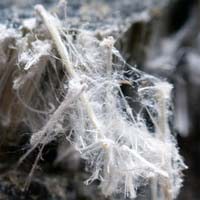Asbestos Found in the Gallbladders of Pleural Mesothelioma Patients
 There is new evidence that asbestos fibers can make their way into the gallbladders of patients with the lung-related cancer malignant pleural mesothelioma. The finding may help explain why some of these patients also suffer from gallbladder disorders.
There is new evidence that asbestos fibers can make their way into the gallbladders of patients with the lung-related cancer malignant pleural mesothelioma. The finding may help explain why some of these patients also suffer from gallbladder disorders.
A new study conducted in Italy and published in the Journal of Microscopy discovered microscopic fibers of the mineral asbestos when they analyzed thin sections of gallbladders from malignant pleural mesothelioma patients under an electron microscopy.
Migrating Asbestos Fibers
Exposure to asbestos is the primary cause of malignant mesothelioma, an aggressive cancer that starts on the membranes around the lungs, abdomen or heart. When mesothelioma grows on the pleural membrane around the lungs, it is known as pleural mesothelioma.
Asbestos fibers are sharp, tiny, and insidious. When they are accidently inhaled or ingested as dust, usually in an industrial setting where asbestos is being used, they become embedded deep in the tissue.
The unique shape and size of asbestos fibers makes it nearly impossible for the body to rid itself of them. Years of contact between these fibers and body tissues can eventually trigger cellular changes that result in malignant mesothelioma even decades later.
Some people have certain genetic anomalies that make them more susceptible to mesothelioma after asbestos exposure.
Asbestos in the Gallbladder
The new Italian study suggests that asbestos fibers do not necessarily stop migrating when they reach a mesothelial membrane and that this continual migration could damage the gallbladder, an organ responsible for producing bile.
The doctors discovered that some of their pleural mesothelioma patients were also suffering from gallbladder disorders such as gallstones or cholecystitis, an inflammation of the gallbladder that can cause fever, nausea, vomiting and jaundice.
When thin segments of the gallbladder were examined with electron microscopy and energy dispersive spectroscopy, researchers discovered fibers of both chrysotile and crocidolite asbestos. Immunohistochemical analysis indicated that asbestos had made its way into the gallbladder via the connective tissue.
“These findings confirm that asbestos fibers can reach the gallbladders of patients with malignant pleural mesothelioma, for whom the development of respiratory diseases confirms asbestos exposure,” writes lead author Federica Grosso.
In 2015, Dr. Grosso and her team confirmed the presence of asbestos in the gallbladders of asbestos-exposed people who did not have mesothelioma. For both studies, study subjects were from the Casale Monferrato area, a well-known asbestos-polluted city with an active asbestos plant until 1985.
Source:
Grosso, F, et al, “Asbestos fibres detected by scanning electron microscopy in the galssbladder of patients with malignant pleural mesothelioma”, January 9, 2017, Journal of Microscopy, Epub ahead of print





